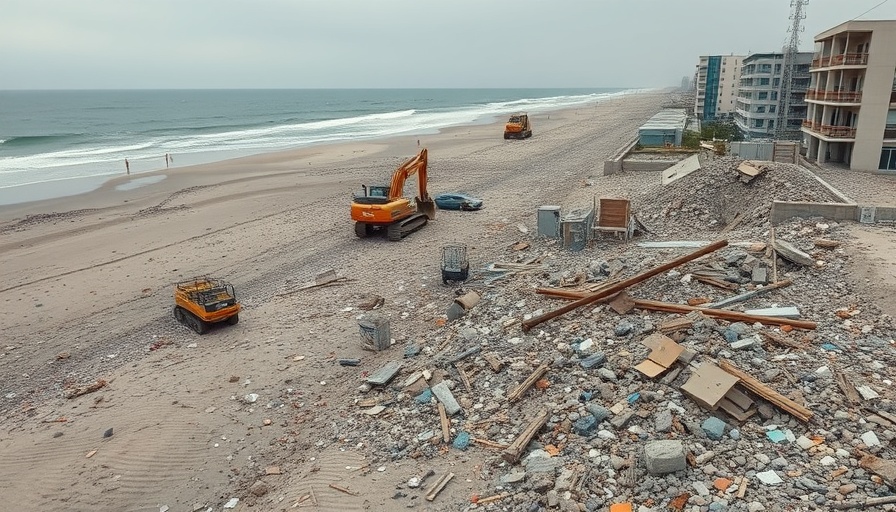
Malibu's Allure: A Closer Look at Oceanfront Properties
Few places in the world are as iconic as Malibu's coastline. Known for its breathtaking views and serene beaches, this exclusive region has become a prime target for real estate investments. In the aftermath of the devastating 2025 LA fires, many beachfront properties were destroyed, leaving a wave of empty lots now on the market. But for potential buyers, the question remains: Are these lots a wise investment?
The Economics of Post-Fire Properties
Currently, several beachfront lots in Malibu are listed for millions, even though they lack any existing structures. For instance, a 6,200-square-foot lot with stunning ocean views is priced at $2.75 million, down from its previous listings of over $3 million. As Josh Flagg, a seasoned real estate agent, notes, “They’re not making any more beachfront properties.” Despite the potential risks associated with purchasing land that has previously suffered from natural disasters, Flagg insists that securing these lots could be a smart financial move before demand inevitably rises again.
Understanding the Market: Supply vs. Demand
According to Tami Pardee, founder and CEO of Pardee Properties, the limited inventory of beachfront lots coupled with strict coastal regulations keeps values high, even for fire-damaged sites. “It’s all about the land,” Pardee asserts, emphasizing that the price is driven more by the location than the previous structures. The rarity of viable beachfront land contributes to the inflated pricing, making it an appealing investment for individuals despite potential insurance complications and environmental risks.
Real Estate and Emotional Investment
Behind these transactions often lies a deep emotional connection. Malibu is more than a destination; it represents a lifestyle defined by a blend of luxury and nature. Residents cherish the area's unique offers, from surfing and horseback riding to vibrant sunsets. Stories of successful entrepreneurs and celebrities nestling into the community highlight its allure, ramping up interest—but it’s not solely about wealth. The quieter, community-focused aspects draw creative minds and like-minded individuals together, fostering a sense of belonging.
The Challenge of Insurance
Along with the inherent risks of natural disasters, potential buyers must navigate the complexities of securing home insurance. As fires have become more prevalent, insurance companies have adopted stricter policies, often demanding more for coverage in high-risk areas. This concern can pose a significant hurdle for prospective buyers who might otherwise be attracted to the properties, emphasizing the necessity for comprehensive risk assessment.
Looking Ahead: What Does the Future Hold?
The future remains uncertain, both for the environment and for real estate. Rising sea levels, erosion, and ongoing wildfires pose legitimate threats to coastal living. However, the increasing desirability of beachfront properties may outweigh these concerns in the eyes of investors, especially as the demand for oceanfront living continues to climb. In Malibu, the intersection of wealth, nature, and community will remain a powerful draw for those willing to take the plunge into the real estate market.
The Bottom Line: Is It Worth It?
Ultimately, investing in fire-damaged beachfront properties is a complex decision that encompasses economic, environmental, and emotional factors. While prices may seem steep for lots devoid of structures, the unique advantages of owning land in a coveted location like Malibu persist. For those prepared to embrace the challenges while harnessing the benefits, now seems an opportune moment to enter one of the world’s most sought-after real estate markets.
As the recovery from the wildfires continues, Malibu's real estate landscape is evolving rapidly. Whether you're a serious investor or simply curious about the market trends, it’s essential to stay informed about challenges and opportunities that lie ahead. For those contemplating ownership in this beautiful yet volatile region, careful evaluation and timely action might just lead to a rewarding investment.
 Add Row
Add Row  Add
Add 




Write A Comment